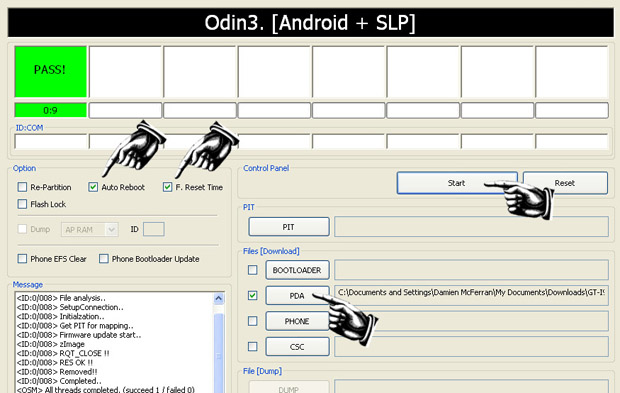Rooting Android Part 2: Breaking the Norse code

Having decided to take control of my Samsung Galaxy S II by installing new system software, I needed to know two things: what and how. Start by asking Google about "rooting Samsung Galaxy S2" — it doesn't really matter what the topic is these days, the basic skill you need in making a good start is framing the right Google query. All those years understanding operating system theory, not so useful.
It was a source of some pleasure that the top hit for that search query was for our sister site, CNET UK, and its video guide to exactly what I wanted to do. Not quite so sure about having to 'grab this' and 'grab that', but they're young and thrusting and listen to new-fangled hipty-hopty music on giant headphones all the time, so that's understandable.
As the guide pointed out, I needed a new kernel file, which sets the overall behaviour of the phone, a piece of software to flash it to the phone, and a utility to set up my status as Supreme Overlord of My Own Hardware.
This was where it started to get interesting. The link to the kernel software actually went to a very long list of near identically-named files, of which I had to pick one. This list lives in a forum run by xda-developers, a mobile phone tech group of very long standing and considerable reputation, so I had high confidence that one of them would be correct. But which? I'd get back to that, but first let's get — or grab, if you're of tender years — the rest of the pieces.

The flashing software was easier. It's called Odin, and lives in one of those file distribution services that annoy the great and the good. Everyone recommends Odin, so it must be OK, but there's no copyright or ownership information with it, let alone any help or other documentation. You have to get the right settings for the bits pointed out in the screenshot above, but that's about as much aid as you'll get.
Call me old-fashioned, but if I'm going to be tampering with the most intimate details of my smartphone I like a little more reassurance than that — not to mention some sense that I'm not bringing down Western civilisation through intellectual property abuse. A few minutes with a resource editor showed that Odin was written by Samsung itself and, one assumes, quietly released to the community: the copyright field in the resources says "To Do", so m'learneds weren't troubled.
The software that gives me root access after all else is done is called S2 Root and was written by a member of xda-developers as was, I noted for next time, an open-source alternative to Odin called Heimdall. That will please Norse scholars and mead fans.
The developers are active in the forums and responsive to user requests and queries, which is reassuring and helpful; the downside is that everyone involved has been doing this for a while and thus writes in a shorthand which is hard for the newcomer to decode. In particular, there are so many different versions of so many components of the process, some outdated, some customised for different platforms or different requirements, that it's hard to know what's the best option.
In an attempt to ensure that I had the right new kernel, I did some more research and found one explicitly prepared for 'T-Mobile Galaxy S2". Oho, that'll do.
Everything was downloaded and prepared according to the online recipe, the sacrificial phone plugged in with the right options set, the magic Download Mode entered by pressing Volume Down, Home and Power, and Odin summoned.
Time to do the deed. "Click on the Start button, and when the green PASS shows, you're ready for the next step." Start clicked... a pause, some incomprehensible status output, and a big red ERR.
ERR. I said it out loud, with feeling and foreboding.
Then I looked at my phone, and said something else.
Tomorrow: the reason for that unpublishable word
Picture credit:CNET UK